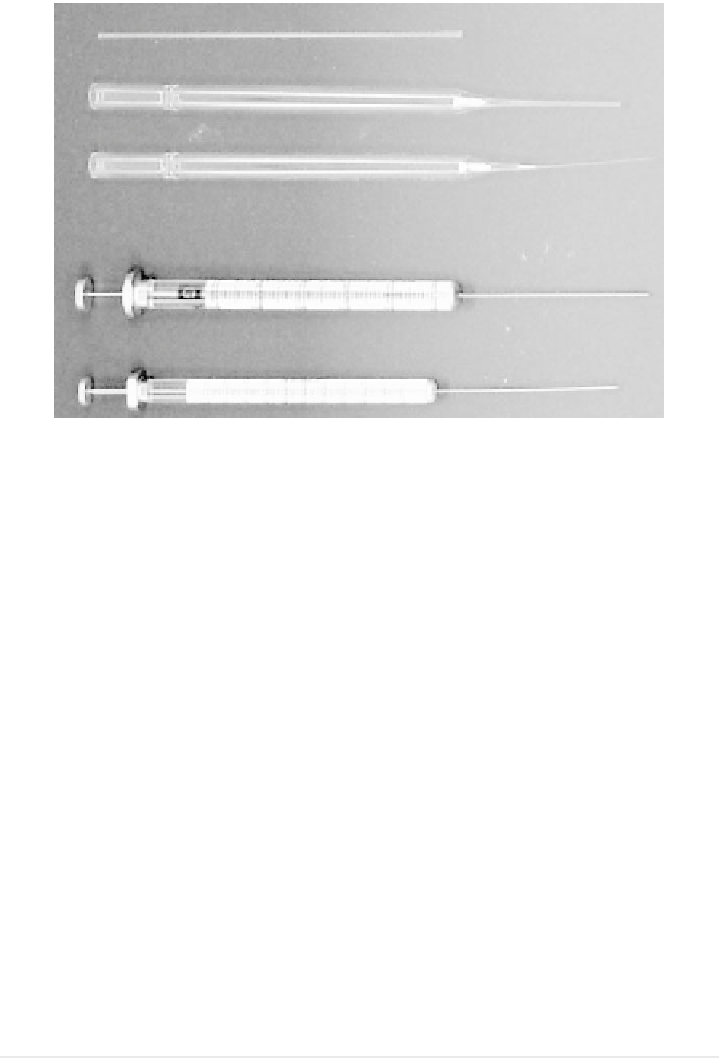Agriculture Reference
In-Depth Information
Figure 9.3.
Sample application tools from top to bottom, glass capillary, Pasteur pipette with tip
drawn out, syringe for HPLC, and syringe for GC.
Table 9.2. Common Stationary and Mobile Phases Used in Chromatography
Chromatographic Method
Stationary Phases
Mobile Phases
Gas chromatography
Solid or inert solid covered
Gas, usually helium,
by high-boiling liquid
a
nitrogen, argon,
or hydrogen
High-performance liquid
Fine porous silica and alumina;
Same as liquid
chromatography
particles are finer, increasing
chromatography
efficiency but requiring
but at high
high pressure to push
pressure
elutant and sample
through column
b
Thin-layer chromatography
Thin layer, commonly 250
m
m
Aqueous and
(applies also to paper
thick, of silica gel, alumina,
solvent
chromatography)
cellulose,
b
or a sheet of
solutions
chromatographic paper
Electrophoresis
Solid or semisolid absorbant
Current
saturated with buffer
a
Oil can be varied such that the stationary phase has varying degrees of polarity.
b
Surface modifications commonly involve phases to change the surface polarity such as attach-
ing a long-chain hydrocarbon, usually 18 carbons in length. This would be called a
reverse-phase
C18-impregnated stationary phase
.


